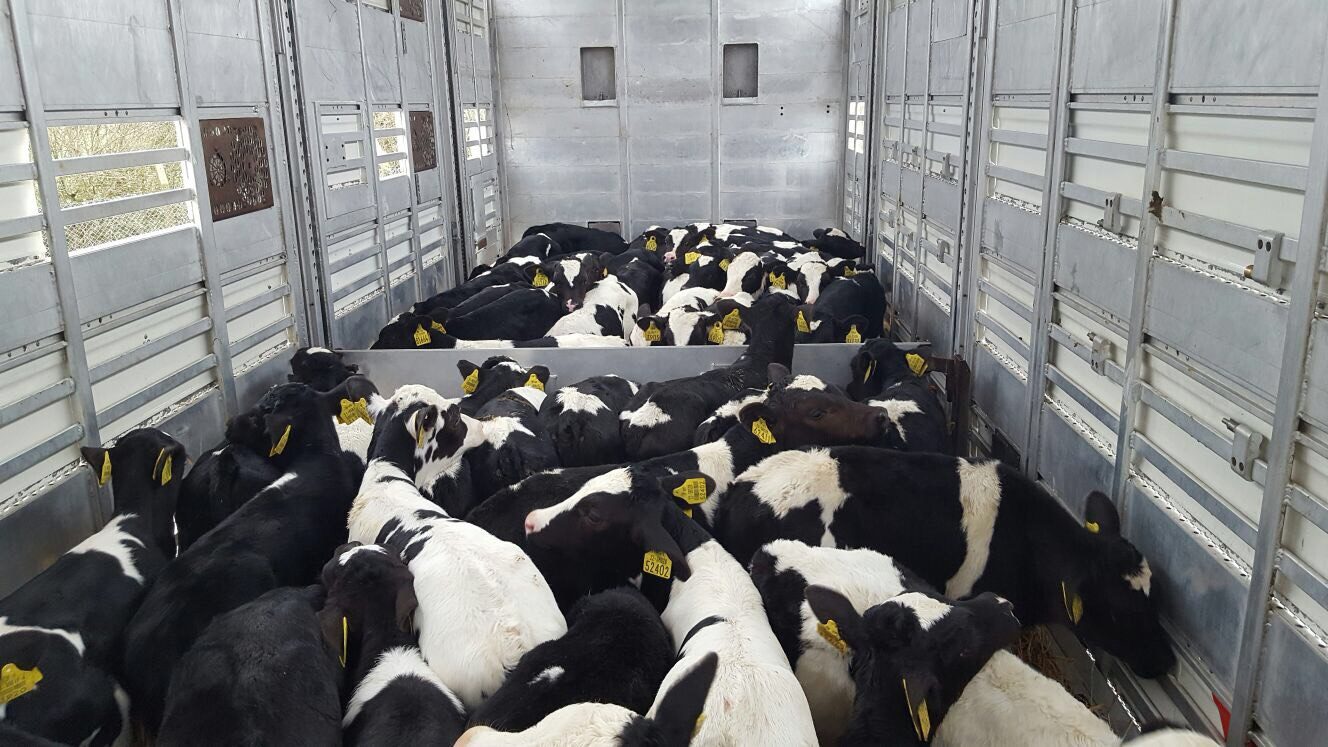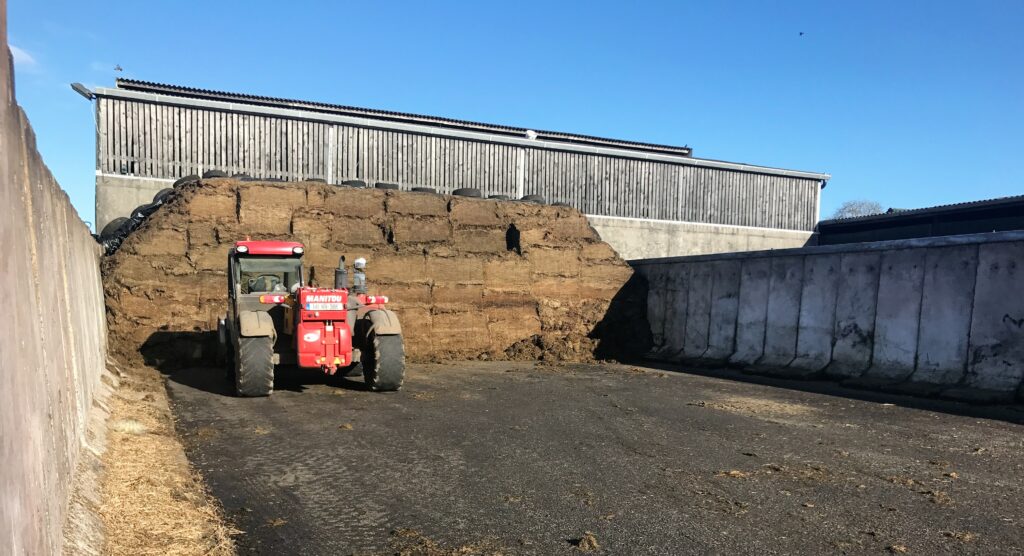Ireland’s dairy-beef industry has found itself propelled into the fast lane. Since the quotas were abolished in 2015, the national dairy herd has increased in size.
As a result, there has been a proportional increase in the number of dairy calves coming on stream for beef production.
With the second phase of the Teagasc Green Acres Calf to Beef Programme on the horizon, Gordon Peppard – the dedicated programme advisor for the first phase (March 2015 to March 2018) and Pearse Kelly – head of Drystock Knowledge Transfer – outline 10 lessons learned from the first phase of the programme.
Plan
When a farmer buys calves, he/she needs to have a plan as to when these animals are going to be slaughtered.
If this is overlooked, problems in relation to: housing facilities; slurry storage; silage quantity; mixed-age groups creating issues for dosing; concentrate feeding; and cashflow can arise.
It is important to talk to your processor to know individual requirements and to ensure that all animals meet market specifications in order to achieve bonuses and quality assurance (QA) payments.
Furthermore, to boost cashflow, aiming to have cattle fit for slaughter at different times of the year, when – generally – cattle prices are higher is advisable.
High beef output
This is measured by the kilograms of beef produced / ha and it is a combination of a high-stocking rate and the excellent performance of each animal on the farm.
As a target, 1,250kg/ha should be produced. This can be achieved from a stocking rate of 2.5LU/ha and a performance of 500kg of beef / LU.
Farmers need to decide on a production system and stocking rate to suit their land type and housing facilities on the farm. In calf-to-beef systems, these targets are reachable and higher levels can be achieved.
Sourcing and rearing the calf
It is vital that the farmer sources a good-quality calf. Buying spring-born calves – before March 17 – will help increase output, as these calves will be weaned and at grass for a longer period during the first grazing season.
When it comes to feeding milk replacer, feeding up to 0.75/kg/day will increase growth rates to weaning.
Hygiene, consistency and feeding times are all vitally important when it comes to reducing stress on the young calf.
Calf rearing facilities
Calf housing should be fit for purpose. The farmer needs to provide a clean, warm, dry, well-ventilated shed for his/her calves.
Installing a 1:20 slope on the floor – from the back to the front – with a channel to remove seepage to a tank can help facilitate a dry bed.
Plenty of straw bedding should be used – especially in cold weather conditions, while making sure that the calves have plenty of space in the house – 2.2m² is recommended.
Adequate ventilation is paramount and it is important that there are no draughts at calf level. There should be an outlet – 5-6m² for each 100 calves – which needs to be covered to prevent rain entering and wetting the straw bedding.
In order to achieve adequate ventilation, the inlet should be two-to-four times the size of the outlet. Good ventilation removes bugs, respiration, moisture, smells and reduces the risk of disease.
Animal health plan
Again, it is vitally important that farmers operating calf-to-beef systems implement a heath plan in conjunction with their vet.
This health plan should involve a vaccination programme, as calves may be coming from multiple sources. All top-performing farms implement a vaccination programme for pneumonia and booster shots are administered at the correct stages throughout the animal’s life.
In addition, a strategic dosing regime needs to be planned to control worms, fluke and lice throughout the grazing season and during the housing period.
Soil fertility
In order to maximise output and drive animal performance, it is important to achieve high levels of liveweight gain from grazed grass.
Therefore, in order to ensure that enough high-quality grass is available, soil fertility needs to be at optimum levels.
Firstly, the pH of soil can be addressed through the application of lime. Then, phosphorus (P) and potassium (K) levels should be corrected to index 3.
In addition, slurry and farmyard manure (FYM) should be targeted at low-index fields and the remainder can be corrected with compound fertilisers.
Grassland management
Once soil fertility is addressed, having a paddock system in place to supply quality, leafy grass at all times is important. This maximises the proportion of grazed grass in the animals’ diet and – therefore – maximises weight gain from grass, while also improving re-growth quality.
The target is to have at least 240 days grazing in year two. Although the spring of 2018 turned out to be a disaster – to achieve this target – animals need to be out early in the spring (weather depending).
This will require excellent management in the autumn, where paddocks are closed up early to ensure a supply of grass in the spring.
Again, good management during the grazing period in the spring will allow the farmer set the farm up for maximum productivity over the summer – which is critical to success.
High-quality silage
In a calf-to-beef system all animals are a priority. Therefore, producing high-quality silage to ensure all animals meet the target average daily gain (ADG) of 0.6kg/day over the winter period is critical.
All silage produced on these farms should be greater than 70% dry matter digestibility (DMD). This reduces the need to increase concentrate levels required to meet daily gains.
The difference for 100 weanlings – over a 140-day winter – could be €7,000 or €70/head between 62% and 72% DMD silage.
Weighing cattle
Weighing cattle at regular intervals is an important tool when its comes to managing animal performance. It is also vital to ensure that performance is not compromised at any stage from purchase through to slaughter.
At a minimum, animals should be weighed at turnout, mid-season and at housing. Poor-performing animals can be identified and issues can be addressed immediately.
Animals coming close to finishing can be grouped together and – therefore – efficiencies are increased as only cattle close to target weights are fed the finisher ration.
Review the plan regularly
While having a detailed plan is important, looking back over it on a regular basis is essential. Farmers need to ask themselves:
‘Are key targets being met?’ If not, why not? What changes are needed to keep my system on target or does the plan need to change in some way?’
However, reviewing the plan does not mean making changes just because the targets are not being met. If the plan is adequate, the objective must be to stick to it and make the changes that are necessary, so that targets are achieved.






